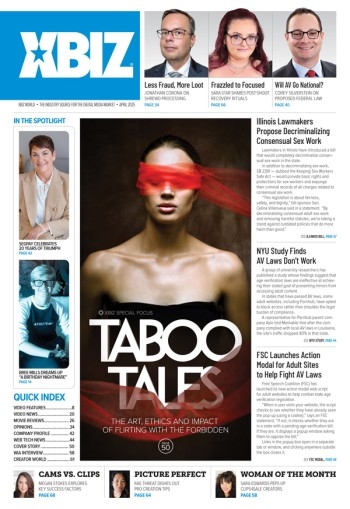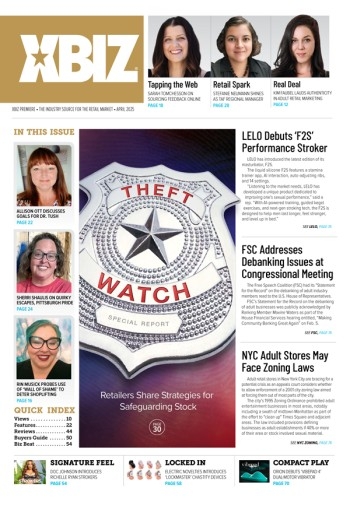Having a well thought out and functional user interface is vital for member sales and retention. While most Webmaster's consider this to mean "easy navigation" — it involves more than that. Today's installment will look at the "selling interface" that your visitors are exposed to: your AVS or pay site's 'splash,' tour, and 'join' pages:
» Continued from Part 1
Hitting the Main Line
Once the visitor hits your main or splash page, he should be warmed up and ready to see what you have to offer. If you followed my previous suggestions, he or she will be curious, and looking for immediate answers to any questions they might have, such as "What's inside the site?" or "How much does it cost?" plus "What will I get for my money?" and "Can I trust you with my credit card info?"
I like to use four bold buttons to the left of my main image: "Enter," "Members," "Preview," and "Join Now." Clicking "Preview" will launch the free tour. Clicking on any of the other three buttons or the main image will bring you to the AVS Script or pay site 'Join' page, depending on the type of site you're running. There is an ancient saying that "All roads lead to Rome" — and on a good AVS or pay site tour, all links will lead to the Join page:
While more conservative designers will decry any showing of 'nip or bush' in a non-age verified environment, I do not find such images to be offensive, as long as you stick to showing lovely ladies the way God made them, and not doing unspeakable things with a German Shepherd, or spread wide enough to insert a cantaloupe in any of her orifices, or what have you. Obscene? Never. Pornographic? Hopefully, but with all the warnings your visitor's had, nobody should be shocked: While I am not an attorney, and there are doubtless those who claim it goes too far, I do not see anything wrong with showing nips, or a tiny bit of puss, as long as it's done 'artfully' and not solely to "appeal to the prurient interest."
However, when concerning the images you use on your tour pages, this is the limit of what I feel is acceptable to show in a non-age verified environment. While some would say "over the limit" —- I can point to more risqué content on public display in any of the world's great museums. This is simple nudity, and not displayed at a level that "appeals to the prurient interest." Yes, I repeated that sentence for a reason; and if you don't know what it means, you had better find out before you go any further in this business:
Join the Band
As it's (or at least should be) the easiest page to wind up on, let's visit the Join page. This is a standard page that could be used across all of your AVS sites, with an explanation of why I use, and why the surfer should join, your preferred AVS. I like to use a customized page because the "stock" AVS script often requires users to scroll (a big no-no), and a little editing for a better "fit" with my site is always welcome. Be aware, however, that some AVS' do not allow script changes.
One thing that I like to add is two bold text rows above and below the script table. The top one lets visitors know that admission to this site is free to those with a current AVS ID — which is a key selling point. The bottom one is a text link to the AVS sign-up page, which is a much more effective mechanism for sending traffic to the AVS than is the standard "apply for an id" button. This is an important factor in making membership sales, and as you may be paid for the click-through, it is something that deserves attention: just be sure that your link conforms to the AVS' policies, such as 'no blind or misleading links' and you'll do ok. Pay sites should avoid links from their Join pages.
One exception to this is a link to the tour. As many people will fall into this page without taking the tour, and not be certain they wish to join, you want one more shot at them; one more chance to make the sale. You use your tour for that:
Going On Tour
For those that hit the "Preview" button, your tour pages await. While AVS tours tend to be quite simple compared to more elaborate pay site tours, they should all convey their message cleanly and quickly. I like to use four quick loading tour pages, each showing a small preview image and offering a brief textual description of three main site features. Each of these features links to the Join page, as does the blinking "Enter" link on the page bottom. You should also link the images to the Join page as well.
At the very top of these pages, list a short "recommendation" from previous happy visitors. This is a great way of reassuring the prospect that joining is the right decision to make. At the bottom go the Enter and Next page links. These too lead to the Join page from the final page of the tour. Everything you do should move the surfer closer to the sale — nothing goes "back." Fast tours are essential as many people still surf at 28.8k, and a slow loading tour gives the impression of a slow loading site.
You should experiment, like by using a variety of text colors on these pages, to see how (and if) it affects your sales. Use a variety of model "types" to show the range of your content offerings: blondes, brunettes, ebony and Asian - if there's something inside for everyone, then be sure the prospect knows it!
A Few Final Points
Like all good tours, yours should be a work in progress. You should constantly try to refine your approach, because every improvement will translate into sales. Test different page layouts, and different sales approaches. Find out what works for you and your traffic, and always be flexible. Just remember that your goal is to send the surfer to your Join page, and convince him to sign up for a membership now!
Also keep in mind that forcing the surfer to scroll is a definite no-no on a tour page. I like to keep all of my outside pages 'vertically centered.' Designed for scroll-free viewing on typical 800x600 pixel displays, they look awkward on a 1025x768 or larger display, and so I tend to place these pages in the center of the screen, so everything is neat and tidy, right in the middle of the page. You can easily do this through creative table nesting, if you wish a more cross-browser compliant approach than is possible through DHTML.
Finally, make sure that your code and images are as streamlined as possible. Fast tours are essential as many people still surf at 28.8k, and a slow loading tour gives the impression of a slow loading site; not the impression you want to give to the prospect. Remember, you can make the pages seem to load faster due to the image pre-loading and the distraction caused by your "warming" page if you follow my advice.
Next time we'll look at 'back end' interfaces: ~ Stephen





